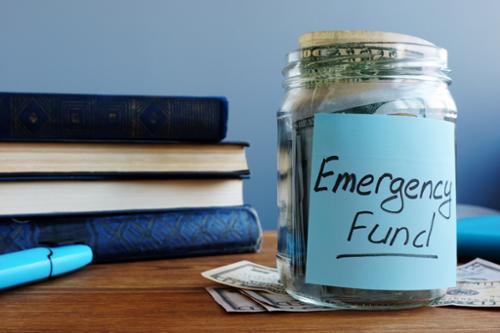While many doctors make a lot of money, many people also forget to calculate the cost of their education and the burden it places on doctors for many years into practice as they pay off their debt. New doctors should set themselves up for success by setting aside an emergency fund despite their student loans—and here’s why.

Saving for a secure financial future is a marathon, but some situations require a sprint to get ahead, which is certainly the case with establishing an emergency fund. In the event of an emergency, it is better to have to crunch numbers before it is truly needed than to have to sprint to catch up. Being prepared for life’s uncertainties should not be a luxury even when balancing saving alongside debt.
The pandemic illustrates the perfect example of why everyone should have an emergency fund since it was a year of uncertainty for many professions, including doctors. While many consider doctors to have one of the safest occupations, physicians were not spared the effects of COVID-19 with as many as 72% of doctors surveyed reporting a reduction in income. Telemedicine appointments were on the rise but ultimately could not compensate for the decrease in elective procedures that patients outright canceled.
Saving while responsibly paying down debts like student loans will require sacrifice and it may not always be easy, but it will be easier when things are going well than waiting to do so during an emergency. While student loans have notoriously high-interest rates which makes them a priority to pay off, putting aside a savings account for emergencies will prevent racking up credit card debt with even higher rates.
The traditional budgeting 50/30/20 rule is a good start toward responsible financial management and it is never too early for young doctors to be consciously aware of their spending habits. This rule allocates 50% of income towards living expenses or other necessities involved in housing like clothing, utilities, food, or transportation. The largest allotment includes paying off student loans or other debt as well. The next tier of spending assigns 30% of income after taxes for saving, investing, or putting towards a retirement account. The last 20% portion of income is the designated discretionary fund to be spent on basically anything. But here is where the discretion comes in—young professionals should plan room here for making their emergency fund or even additional payments towards their student loans.
The details of how much to save for an emergency fund tend to be in consensus almost as much as the 50/30/20 budgeting rule. Namely, the savings target for an emergency fund should cover a minimum of three months of living expenses, but six months of savings are regarded as the ideal financial cushion. This money should be accessible and liquid to meet the needs of a potential emergency.
Anything over the ideal emergency savings amount is money that is not working hard and should be invested elsewhere—such as a 401(k) plan, Roth IRAs, 457 plans, or 403(b) accounts. Ironically, while these tax-advantaged accounts are great for investing when you do not need to save for an emergency fund, they are decidedly poor homes for an emergency fund itself since they involve a timely process to withdraw any funds which do not meet one of the bare minimum requirements of meeting the needs of an emergency.
So then what types of accounts are more suited for hosting an emergency fund? Ideally, emergency funds should be placed in high-yield savings accounts that do not have penalties for making withdrawals. The downside is that they tend to require a minimum balance which is a fair tradeoff for the ability to earn 0.50% annual percentage yield (APY). These accounts are offered more frequently by online banks with a lower overhead which allows them to offer such high returns.
Another suitable option for homing your emergency fund is placing it in a money market account at a local bank which offers a deposit account that pays interest based on current interest rates in the money markets and allows for unlimited withdrawals. A normal checking or savings account will provide the most liquid access to your emergency fund, but this money will not be working for you the same way the first two types of accounts will with earning potential of only .03-.04% APY.
Ultimately, you worked hard to get where you are in your career and your money should be working just as hard to passively grow your wealth and actively secure your peace of mind—a well-placed emergency fund will provide both. Young doctors with debt are no exception to the rule because everyone needs to be prepared for emergencies if the last year has taught us anything.
Physicians Thrive is a dynamic, full-service financial planning company helping doctors take control of their finances. From student debt repayment plans for new doctors to retirement security planning for seasoned physicians, doctors at all stages of their career can make the most of their money by collaborating with our experts. As a certified B Corporation, Physicians Thrive donates a portion of our profits to Give Sight Global to restore sight to someone in need. Contact one of our trusted advisors today.